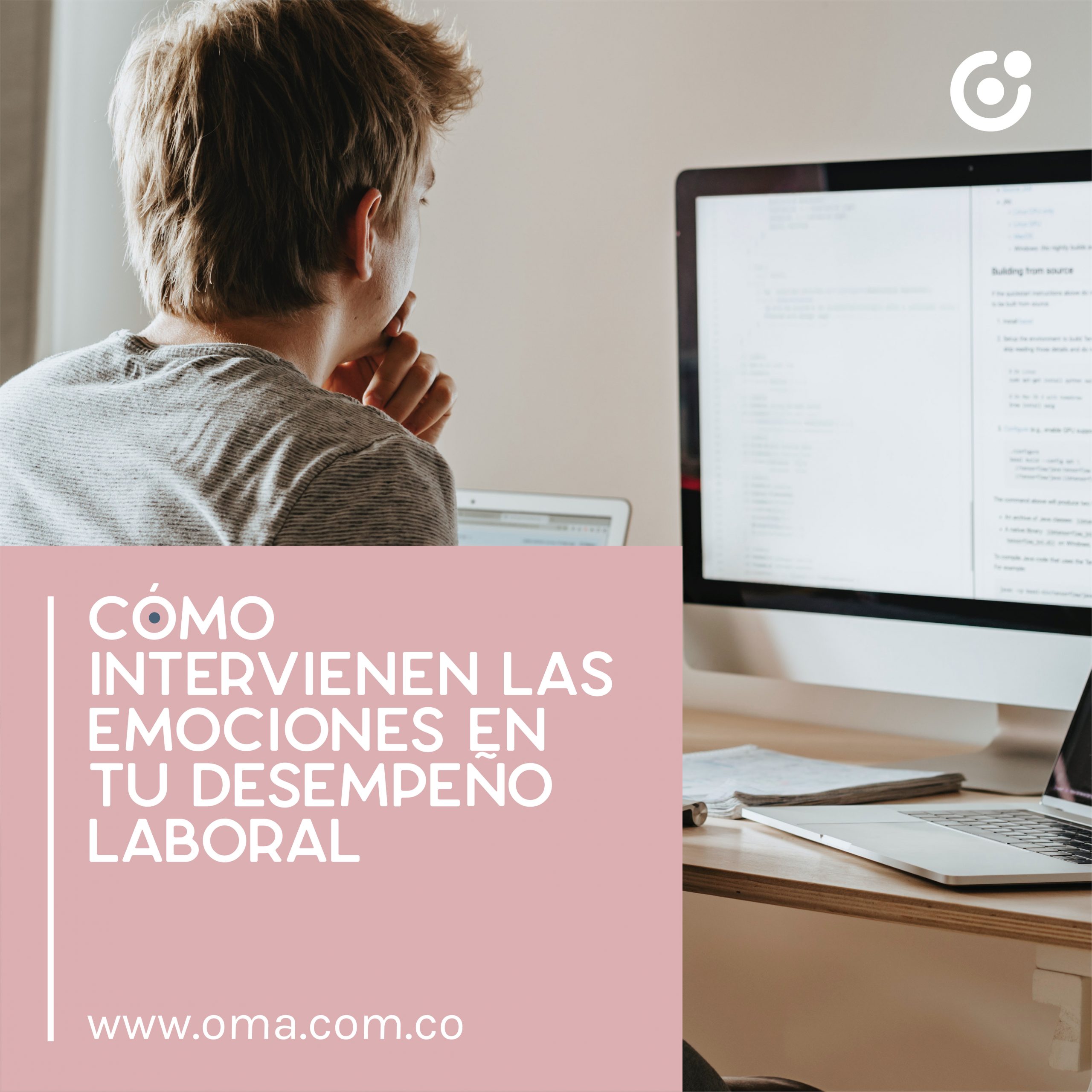How emotions affect your work

How emotions affect your work
A Guide to Work Emotions
At work, we rarely discuss our feelings. We are all familiar with the concept of emotion. It's our internal reaction to things: the happy cry we let out when we see a loved one, the gasp we give out when we get bad news or the annoyance we feel when we have to adjust a method at the last minute.
Workplace emotions are rarely expressed in public. While some people like spontaneously singing out loud, this rarely occurs in a productive business meeting. Watching sports on TV allows us to express ourselves more verbally than conversing with coworkers. Fear is discussed with our partners more than with our coworkers.
Dealing with work emotions is more difficult because we are hesitant to acknowledge that they exist, thus we rarely deal with them.
It's important to remember that there are just a few basic emotions.
Love, happiness, and enthusiasm are examples of positive emotions. Negative emotions such as rage, pain, sadness, guilt, and fear are examples of negative emotions. The intensity of everyday emotions and work emotions varies.
There are a few key aspects to consider. Even if we (the "we" in this case refers to the corporate sector) tend to overlook emotions at work, they do exist. People react to events that occur in their environment. We will suffer if we do not pay heed to such reactions.
It's crucial to distinguish between emotion and thought. "I don't feel like this plan is working," it's a phrase that we'll surely hear at some point during the day.
When a person thinks or believes that a particular activity will not succeed, they do not "feel" an intellectual assessment of the plan's viability; instead, they experience an emotion, such as fear, anger, grief, or even guilt, as a result of the plan's failure. The feeling that follows the thoughts is what can derail any growth effort if it is not addressed.
People frequently hide their feelings at work: if they are hurt, they may act erratically, or if they are truly afraid, they may try to put on a bright façade. You should always address the underlying emotion rather than the surface one.
People's emotional responses to continuous development and learning are diverse. As leaders, we must ensure that we do not try to persuade anyone to believe otherwise because rationality rarely solves emotional issues. Instead, let us strive to change feelings through experiences.
Emotion management is a unique problem for continuous improvement. People are more likely to participate when they are experiencing favorable emotions. Leaders must be ready to deal with issues that aren't based on facts or evidence.
If you think this will be a tough administrative shift, reach out to the professionals of #OpenMindAdvisor
Personal and business profitability

Personal and business profitability
How to achieve a financial balance based on personal and business profitability
Talking about profitability is not just talking about a monetary issue since the effects of achieving income or having a profitability that allow establishing a specific lifestyle generates significant effects on the mental balance of human beings.
Beyond simply thinking about covering expenses, generating savings or investment possibilities, profitability generates motivation, inner peace, and a feeling of self-confidence that allows facing the challenges of daily life with the full certainty of having all the tools to overcome any adversity.
In a more theoretical sense, profitability defines the ability, capacity or quality that an investment has to generate a profit, and this ability to generate profit can be quantified using different financial indicators, known as profitability indicators.
In a more practical sense, profitability is the ability to transform any investment into a benefit, from the investment of time, money, or the fact of putting knowledge and skills at the service of others.
Each human being has in their hands the possibility of transforming their financial reality by establishing clear goals and accompanying them with a specific action plan that allows them to achieve their objectives in a given period of time.

There are some techniques to achieve balance in life and achieve profitability.
Establish a financial objective, for this, it is important to define dates or time limits together with a measurement system, so the objectives will be measurable and achievable
Define an action plan, the more specific the plan, the more likely it will be to obtain results.
Create a management and control system for the stated objective
Believing that it is possible to achieve it, the ability of the mind to create what is believed is admirable and this is a fundamental point in the achievement of any objective.
However, educating yourself financially or having the possibility of training with an expert on the subject is of vital importance, since it helps to measure both at a business and personal level the viability of investments and specific actions that must be taken to achieve the objectives. proposed objectives.
To achieve financial balance on a personal level it is important to define very clearly the reason why you want to achieve this balance, this will be the motivating factor to define a clear and measurable action plan over time.
At the business level, it is equally important to establish in the company of the members of the organization, what is the mission or the reason why it is important to have a financial balance since this will give more meaning to the actions that are proposed in addition to involving collaborators in achieving a result that translates into a common good.
The greatest asset of organizations are the people who make it up and through their participation and dedication in their functions, the expected profitability is achieved.
Concluding that it is teamwork, it is not a matter only of a financial department; On the contrary, one of the fundamental pillars in any planning aimed at obtaining business profitability is the participation of all members of the organization.

Remember that balance is not a state of permanent imperturbability, on a financial level this represents constant changes, ups and downs, which requires a constant commitment, dedication, and above all an emotional management that allows us to go through different moments and keep alive the illusion of obtaining the expected profitability both on a personal and business level.
.
Ivone Medina
Commercial Strategy Consultant at Open Mind Advisor.
7 time management suggestions

"Never let anyone own your time." Said Lou Gerstner, a former CEO of IBM. It's a simple and apparent idea, yet it sounds fantastic.
Whenever I have lost control of my time throughout my life, I have become stressed or unproductive. Reflecting on this and focussing on the development of leadership skills, I discovered that planning and sticking to a routine has a significant impact on how I feel and my sense of control over my life, particularly, of course, control around my time.
When I advise leaders and successful people, I find the following keys to be common:
1. Create a routine
Regardless of the occupation in which you find yourself, have a routine, distribute the time in specific activities and follow the plan. This will ensure that you are taking charge of all those things that are important in your life, in this way include on your agenda activities not only like work, but also allow yourself to rest, get personal and professional development, and even take the family time you need. All of this is part of creating successful routines for your life.
Your routine may alter over time, but establishing a schedule can help you maintain order in your life. If you're developing a business and need to find, code, and hire clients, set aside time to prioritize and isolate each activity.
A calendar application can be your tool today.
2. Reuniones grupales y llamadas
A very useful suggestion shared by busy people is planning group meetings in blocks and dedicating specific days of the week or month for it, as well as answering calls or attending urgent matters. Separate space in your agenda to answer calls or resolve urgent so it doesn´t interrupt all your activities of the day.
Do the same with online meetings. In this way, you will not only be creating a portion of time for meetings, but you will also be creating other blocks of time in which you can do important work.
There are many applications that allow you to order these types of activities in your agenda, for example, there is a function in Google Calendar called Appointments. It allows you to reserve an amount of time and then divide it into parts, you can reserve three hours of external meetings and then divide them into three meetings, one hour each. Or I can reserve an hour of calls and divide it into six calls of 10 minutes each. There are also several specific tools, such as doodle, that offer similar services.
Another alternative that makes managing your time easier is to create bit.ly links for different blocks of time. You can have a link for your external meetings, another link for internal meetings, and another for calls. You can then share these links so people can book time with you.
3. Prioritize your strategic activities and delegate
One of the most essential aspects of organizing your schedule is determining which activities are truly vital, which are merely routine, and which are emergencies. What decreases managers' efficiency, in my view, is that they become engrossed in operations, and the weight of their responsibilities pulls them away from their firms' or work areas' strategic vision.
Making sure that the actions that resolve and guarantee that the plan is moving forward are on the agendas is part of being clear about what is essential. That will ensure that your end aim is met; urgent and last-minute tasks will always exist, and we must ensure that they decide whether or not to postpone the most critical ones, because many operations can be outsourced flawlessly.
How to recognize which are the important activities?
- Planning strategic coordination of activities.
- Finding moments to delegate.
- Risk prevention activities.
- Detecting new opportunities.
- Times of reflection and creation of new ideas.
4. Optimize time for your different types of meetings
The times of meetings vary according to the number of topics and the quality of decisions to be made, having defined the times and ensuring compliance with them is essential for managing your time. Meetings between 30 and 45 minutes are the most effective, the same happens with phone calls, if you try not to invest more than 10 minutes you can have an estimate of how many calls you can make within the spaces to be determined for it.
On the other hand, introductory lunch, dinner, or coffee meetings require additional time for your travel, so I suggest these types of meetings only in cases where people know each other well enough to make this space fun and productive.
I have been able to observe this type of practice in technology executives and it has been incredibly effective in minimizing the exchange of emails and saving time.
This of course will not work with everyone, because some people may find this type of invitation impersonal or ignore it, it is important then, to take into account the culture of the company with which you implement this type of application and to share and validate with which of your audiences you can share these tools. In any case, if you do not feel comfortable sending the link to someone, you can use your own spaces for appointments, suggest some meeting times, and then reserve the specific space on your computer.
These are some types of meetings and the suggestion about the time to dedicate to them:
- A 30-minute office meeting to meet someone or catch up
- A 45-minute meeting outside the office. Reserve time for the journey to mobilize.
- A 10-minute call to resolve or contribute to someone who needs you.
- A 15-minute Daily Scrum - Ideal for startups or teams that require administrative management.
- A 30-minute weekly staff meeting
Regardless of the meetings you have, organize them into blocks based on your calendar. Adjust the block in coherence with your demand if you believe a certain sort of meeting requires more or less time.
5. Set aside time to check your email
This is the most important recommendation in this entire publication. Email can become the owner of your time if you don't know how to manage it. To take ownership of your email, avoid checking it all the time. You can do it by programming a daily space to respond to issues that are urgent and depends on you so that other important processes advance and another space that can be weekly or twice a week to evacuate emails that require deep analysis or additional work from you to give an answer.
It is absolutely essential.
6. Plan to exercise and also get some family time
Unless you put it on your schedule, it won't be done. That applies to exercise and the time you spend with your family.
Activities such as exercise, meditation, spiritual practices, and any other activity that increase your well-being, are the ones that you need to take care of the most and do not allow work to leave you without these spaces.
The same applies to planning our time with family and other important people. If you are a workaholic, you will end up taking time away from your family unless you reserve it in advance and train yourself to quickly disconnect.
For many executives today, it has become clear that these spaces are forceful and make a difference in the happiness and effectiveness of work
7. Realistically manage your time
We dedicate a lot to thinking and reflecting on whether we can do more with the time we have, with the speed we have in work activities, many say they want days with more hours, however, today's leaders who learn to manage their time are definitely happier, and more effective.
We don't need more time, we just need to manage it better, and being realistic about the things we can do within the time we have and working to improve our productivity within the same time is what makes the difference from great leaders.
Taking ownership of my time and planning my days and weeks made me a happier and more productive human being. Hope this post helps you get there too.
I'd love to hear your productivity tips. How do you manage your time? How do you manage your calendar? What tools do you use? Share in the comment section!
Omaira Giraldo Soto.
Happiness Manager at Open Mind Advisor.
Results management system: A new-normal for education

While we are all aware of the tight anticipation and anxiety that surrounds the release of test or exam results. This uncomfortable situation does not appear to be improving in the middle of "the new normal."
We've had to make huge strides in online instructional technologies and approaches, but the teaching atmosphere appears to be deteriorating.
The negative impact of going "online" is not confined to the emotional and mental costs it imposes on the educational environment; it is a bad outcome of a system that seeks to enhance society via knowledge.
These effects are not limited to students. Close relatives and educators are also victims of this culture.
- Educators without knowledge of technological tools are forced to focus on test results as the primary goal of teaching.
- Family members must take a practical stance towards education.
- While the focus of educational platforms remains to produce good results rather than enriching students' thinking through superlative teaching and a focus on developing their curiosity for the world.
Results in the management system for students are not the only solution to all these problems. Yet, robust results management systems for students have been showing the beginning of the revolution that our educational culture needs.
A student’s results management system makes exam results part of the process, not the goal!
Students are now pushed to focus their studies, on examinations rather than building strong information processing skills or cultivating a healthy curiosity about the world around them.
In practice, we won't be able to do away with examinations altogether, at least not without a major shift in how we think about education. A results management system permits tests to be regarded as another stage in the learning process, one that helps us recall how far we've gone and how far we still have to go.
Allows continuous improvement by students
We begin to use tests to their full potential when we perceive them as another stage in learning. Test scores are more than a measure of how much content a student has absorbed. It's also a good place to start for students who want to focus their studies more.
The management systems allows students to regularly analyze their progress while still feeling defined by a grade by sharing the outcomes of each class: the assignment, the project, the pop quiz, the planned test, or the final exam. This enables pupils to make more quick judgments and to adjust their route in real-time if they feel they are deviating from the course.
Builds a healthier testing culture
Using a results management system, educators can provide tailored feedback to their students regularly.
While we would prefer participants to grow up in a culture where their self-worth is not determined by their test scores, the world may take a while to catch up.
Teachers must be the catalyst for this change. Because a results management system ensures complete secrecy, sharing tailored feedback helps teachers to interact more with family members and students.
This is the first step in building a path to better learning and a healthier attitude toward testing. The second step is to contact us to plan an improvement in your results management processes
Omaira Giraldo Soto.
Happiness Manager at Open Mind Advisor.
Trabajo colaborativo entre organizaciones: Cómo encontrar el bien común
Estrategia de afrontamiento empresarial a la nueva realidad post COVID-19.
Hace muchos años venimos hablando y trabajando sobre herramientas de adaptabilidad y afrontamiento adecuado a los cambios, cada vez más acelerados que nos imponen los avances tecnológicos y la globalización. Sin embargo, este año se ha marcado el salto de transformación más grande de los últimos tiempos en la humanidad.
El COVID-19 vino para darnos la lección más grande sobre nuestras capacidades de adaptación y la necesidad de crear nuevas formas de estructurar nuestros sistemas de sostenibilidad.
En el modelo tradicional con que abordábamos el cambio, porque la velocidad que nos impone la tecnología requiere que seamos cada vez más rápidos y competitivos, también nos venía llevando a una interacción canivalista con las empresas competidoras.
Hoy se evidencia que los más fuertes no necesariamente son los que sobreviven, sino aquellos que mejor se adaptan. Así que, la reflexión a la que hoy nos invita esta nueva realidad, tiene que ver con la forma en que hemos venido operando y si es válida para la nueva realidad. La búsqueda del bien común se ha convertido en la nueva prioridad global.
. Así que, la reflexión a la que hoy nos invita esta nueva realidad, tiene que ver con la forma en que hemos venido operando y si es válida para la nueva realidad. La búsqueda del bien común se ha convertido en la nueva prioridad global.
Un pensamiento más amplio, ético, integrador e innovador es el reto de las organizaciones y los líderes actuales.
Según planteó Pedro Montes (Madrid, abril 23 de 2020) CEO y fundador de Opinno, ¨Las empresas tendrán que aprender a colaborar y a trabajar en plataforma¨, aprovechado también las nuevas tecnologías como el internet de las cosas (IoT), la inteligencia artificial (AI) entre muchas otras posibilidades que están a disposición de aquellas empresas que se atreven a innovar.
Definitivamente la creación de sinergias privilegiando el bien común, con apertura a descubrir nuevas e innovadoras alternativas, serán el aspecto diferenciador de las organizaciones del futuro.
Sin embargo, a la hora de hacer sinergias es importante tener en cuenta que la integración con otras empresas como alternativa de sobrevivencia no es suficiente por sí misma, es importante que obedezca a un ejercicio estratégico, una conversación y compromiso consciente de los beneficios mutuos y del cuidado que el ADN de las marcas no se disuelva en la alianza, sino que se fortalezca.

Para tener en cuenta al hacer Co-Branding
La pequeña y mediana empresa es uno de los sectores más afectados durante este año retador, y la unión de esfuerzos para crear proyectos y servicios serán las alternativas más viables para hacer crecer los negocios actuales.
- La razón de ser de los negocios que colaboran entre sí, no se altera, sino que suma En otras palabras, no tienes que dejar de ser tú, y al unir esfuerzos cada negocio exhibe y engrandece su fortaleza.
- No hay necesidad de fusión, pero se pueden integrar servicios compartidos: Es el caso de empresas que han disminuido su necesidad de producción y en los tiempos muertos pueden integrar capacidades productivas de empresas que requieran maquinaria o estilos de producción compatible con la capacidad montada dentro de tu organización. Como también la integración de procesos logísticos, de ventas, centros de distribución, en fin, equipos de trabajo compartido que puedan cuidar de las características propias de cada marca.
- Colaboración desde las potencialidades de cada empresa: Es el caso de empresas que tienen un equipo directivo fortalecido y pueden aportar en la orientación estratégica de otra empresa, como también esta última puede aportar a la otra con herramientas innovadoras o conocimientos de operación de la cual es muy experto. Este tipo de intercambio de servicio ha ayudado a pequeñas y medianas empresas a descubrir la ruta para mantenerse después de la coyuntura.
- Colaboración temporal para la generación de un nuevo producto: Es otra de las alternativas que facilita crear alternativas disruptivas e incluso sembrar la semilla de los que pueden ser desarrollos futuros.
Algunas claves de preparación para el cambio con el Co-Branding
- Identifica los cambios en tu negocio y en el entorno donde operas, analizando también el macroentorno para determinar otros entornos donde tus servicios pueden ser requeridos.
- Investiga los pronósticos de cambio en el entorno empresarial y las necesidades futuras de tu público objetivo.
- Revisa inicialmente los paradigmas que te limitan para asumir los cambios que vienen, trabaja sobre tus miedos y limitaciones. También sobre los miedos y limitaciones que tus colaboradores están viviendo.
- Crea nuevos paradigmas, donde reconoces tus capacidades y las de la organización, potencializa los talentos que tienes en tu empresa, y sobre todo identifica eso que te hace diferente y el valor agregado que tienes para ofrecer.
- Céntrate en las bondades de tus productos y servicios, potencialízalos en las alianzas que realices y no temas las bondades de tu aliado, al contrario, maximízalas para que tus valores también se maximicen.
- Y lo fundamental, avanzar hacia adelante sin miedo, en la realidad que tenemos, pero con la certeza de tus potenciales. Ya son muchas las experiencias de empresas medianas y grandes que hemos visto engrandecerse con sus alianzas.
Los cambios en el mundo no paran, y estos suceden independiente de que las organizaciones estén o no preparadas, así que depende de nosotros buscar la adaptación o quedarnos atrás en la ola de transformaciones que ya no va a parar.
Busca acompañamiento profesional para tu transformación y la de tu empresa, en Open Mind Advisor estamos preparados para guiarte en este nuevo camino de fusiones y alianzas, para que puedas aprovecharlas y usarlas correctamente en el beneficio mutuo. Es momento de CREER y de CREAR, estamos para acompañarte.
Omaira Giraldo Soto
Gerente de la Felicidad en Open Mind Advisor.
Developing natural talents
We are making choices all the time. Some authors say that life is the sum of our decisions, which we make in different ways, namely: intuition, reason, feelings or sensations, and when we talk about choosing a profession, reason does take us over and we generally choose it for its field of action, for the economic retribution, for family tradition, or for its popularity in the market, among others.
Although the above is valid, we must bear in mind that we all come to life with talents and gifts to put at the service of humanity, which make us unique and give our life purpose. So, it is key to choose a profession recognizing well what those talents are, being very aware of our vocation which, in a few words, is that inner voice in action that guides us and brings us closer to what we love and what we are passionate about doing.
If we review the figures on job satisfaction they are chilling, in general the surveys tell us that only 15% of working people are contented with their work, the remaining 85% would like to change not only the company but also what they do on a day-to-day basis, that is to say that the numbers of work frustration are high, not to mention the impacts it has on the purpose and life projects of people.

If at this moment you are choosing what to study or want to make a career change, the first thing you should do is be very clear about your talents and strengths. It has been shown that people who stem from these are more productive, committed, and passionate, and that they achieve their goals with more ease, that is, they are more successful, in every sense of the word, in their professional and personal life.
We invite you to give yourself a few minutes and begin to be aware of all your talents, and of all the infinite potential that you can put at the service of humanity. If you need someone to accompany you in this process, we can do it with very interesting tools that facilitate decision-making to have a useful, creative and meaningful professional life. At Open Mind Advisor, we are here to accompany you.
Adriana Garcés
Human Development Consultant.
El emprendimiento como herramienta de transformación personal y organizacional
June 26, 2020coaching,Historias,Liderazgoemprendimiento
Emprendimiento
Hablar de Emprendimiento es hablar de valentía, de esa capacidad propia del ser humano para crear de manera innovadora, para generar ideas de valor que construyen opciones de negocio.
Actualmente ésta es una palabra bastante utilizada con una connotación particular, ya que hace parte de la tendencia y la globalización que afronta el mundo entero a raíz de la coyuntura que estamos viviendo.
Se escucha constantemente la palabra reinvención y emprendimiento invitando a las personas a buscar opciones que aporten a la economía, sin embargo, el componente emocional que hay detrás de esta palabra es bastante interesante y vale la pena detenerse a estudiarlo a profundidad.
Un emprendedor es un motivo de orgullo y admiración, los alcances de los emprendimientos pueden ser tan altos e incalculables que en ocasiones no se alcanza a medir su magnitud y las proporciones de una idea de negocio, ya que por medio de un emprendimiento se puede llegar tan lejos como se quiera.
Sin embargo en el camino de emprender se presentan desafíos importantes de los que hablaremos y especificaremos algunas técnicas para que los emprendimientos sean exitosos y lo más importante, para que no queden olvidados y se pueda trabajar persistentemente en ellos.
Emprender significa aprender a pensar de forma diferente haciendo pleno uso de la creatividad, tomando plena conciencia de las emociones y de la manera como podemos gestionarlas, desarrollando las habilidades para relacionarnos con las personas y equipos, aprendiendo a convivir con los miedos, revisando las creencias para poder tomar decisiones complejas.
No obstante, este es un proceso de transformación. tanto para las personas como para las organizaciones, que con valentía deciden transitar este gratificante camino, que va directamente relacionado con la posibilidad de estar abiertos a los cambios, a ser flexibles y a adaptarse constantemente.
En los pasos para llevar a cabo un emprendimiento vamos a especificar cuatro etapas en el proceso:
La primera es una etapa Consciente que especifica factores como:
 – Escucha interior: Esta permite conectarse con las emociones propias y con la idea de negocio.
– Escucha interior: Esta permite conectarse con las emociones propias y con la idea de negocio.
– Toma de conciencia: Permite encaminar las ideas y saber hacia dónde conducir el proceso creativo, midiendo los alcances y las responsabilidades que implica desarrollar un emprendimiento.
– Autoconocimiento: Ayuda a conocer las habilidades propias y definir en cuáles áreas se requiere un apoyo especializado, para que de manera responsable, se pueda llevar a cabo la idea de negocio, para este tema específico el Coaching juega un papel importante y se convierte en una herramienta de apoyo.
La segunda es una etapa de construcción, en la que se definen las bases para plantear el emprendimiento:
 – Objetivo: Este define lo que se quiere lograr y la ruta o el camino a recorrer para obtenerlo.
– Objetivo: Este define lo que se quiere lograr y la ruta o el camino a recorrer para obtenerlo.
– Realidad: Permite estudiar el mercado actual y conocer los alcances que puede tener el emprendimiento.
– Opciones: Plantear las opciones que nos muestra el mercado, ayuda significativamente a establecer las ventajas competitivas y los factores diferenciadores de cada emprendimiento.
– Plan de acción: Este es un factor fundamental para llevar a cabo una idea de negocio y sobre todo para hacerla de manera estructurada garantizando los avances en tiempo y resultados.
La tercera es una etapa más técnica donde se establecen lineamientos y se empiezan a ver materializados los sueños:
– Marca: Tanto en el caso de marca personal como empresarial, en esta fase del proceso se materializa de manera creativa lo que se quiere transmitir, este es el momento de pensar en esa promesa que se crea con cada persona que interactúe con la marca y en el proceso de como llegar a la mente de las persona por medio de un logo o una imagen y vincularse emocionalmente con ella.

– Plan de negocio: En su elaboración se da orden y estructura a todo el proceso plasmando en un documento cada paso con fechas y tareas específicas que permitan hacer seguimiento y ver los avances.
– Plan de Marketing: Diseñar un plan de comunicación de acuerdo a un público específico, permite garantizar que los recursos destinados a este tema tengan el efecto esperado y comunique de manera adecuada el mensaje que se quiere transmitir.
– Networking: para comprender mejor este término, se convierte en una herramienta que soporta todo el proceso construido y ayuda a generar el conocido voz a voz, que en emprendimiento tiene especial relevancia por que permite dar a conocer los productos o servicios de manera orgánica sin grandes inversiones de dinero.
La cuarta es una etapa llena de ilusión donde el desarrollo de habilidades emocionales juega un papel fundamental para mantener y creer con persistencia en la idea de negocio planteada, en esta etapa influyen factores como:
– Paciencia: Para dar el tiempo necesario a el proceso de posicionamiento implícito en el emprendimiento de acuerdo a las estrategias previamente definidas.
– Actitud positiva: Mantener un pensamiento positivo, constante y que alimente la ilusión ayuda de manera significativa a ser constantes en todos los procesos que conlleva ser emprendedor.
– Formación continua: Para respaldar la promesa de marca que se genera en el mercado con la creación de un emprendimiento y sobre todo, mantener una actualización constante haciendo énfasis en los cambios y desafíos que se presentan en el camino.
– Persistencia: Los desafíos son propios de cualquier proceso para llevar a cabo una idea de negocio y sobre todo para obtener una rentabilidad esperada, para este caso lo importante es afrontarlos con objetividad y valentía sin abandonar la idea cuando ellos se presenten pues a largo plazo se convierten en fuertes herramientas para adaptarse a las necesidades del mercado.

Finalizando, el emprendimiento se convierte en una filosofía de vida que implica conocer nuestras habilidades naturales, desarrollarlas y ponerlas al servicio de los demás buscando construir un mundo lleno de oportunidades para todos. En Open Mind Advisor estamos para acompañarte en tu emprendimiento.
Ivóne medina
Consultora de estrategia comercial
Open mind Advisor
7 New Challenges for Executives
June 8, 2020Trabajo Remoto,Historias,Coaching EjecutivoLiderezgo en equipos
Executive coaching for the development of new skills
The current situation that the planet is going through generates many doubts both on a personal and professional level. Human beings are in a situation where the game board was turned upside down. What should be done with the business? How long is this pandemic going to last? Do we have what it takes to deal with it? At Open Mind Advisor we consider it essential to identify the new challenges that executives face. Next, we tell you the ones we consider to be the most important.
It is evident, without a doubt, that we are going through a junction, which is interpreted as a crisis. But… What is a crisis? Is it a labyrinth with no way out? In psychology, it is a situation where our internal world conflicts with uncontrollable external circumstances. However, it is during these junctures that the possibility opens up to make valuable changes in our thinking, emotions and behaviors. They also encourage us to develop new skills and knowledge that enhance our performance and remain at our disposal for life.
1- The main new challenge for executives is to understand crises as a new awakening towards transformation, both for people and for organizations.
2- The second challenge is to create spaces for innovation and the development of new business strategies.
Let’s consider three ideas: 1) Psychology defines insanity as always doing the same thing and expecting different results. 2) From the evolutionary theory of Charles Darwin, the strongest species is the one that adapts faster to an ever-changing environment. And 3) When extraordinary results are required, it is not necessary to have superheroes, but rather to stop doing what is ordinarily always done. A healthy, strong and extraordinary organization has spaces for innovation where it harnesses the creativity of its leaders, collaborators and clients. No one knows the company and the resources it has to deal with any adversity better than them.
3- The third challenge is to develop and enhance emotional intelligence in leaders and their teams. Every change and transformation process generates a natural reaction charged with fear. Fear is an almost animal response to a threatening environment.
The problem comes when we make this instinct the main motivator that determines our behavior. From fear, every living being has only three options: freeze, fly or fight its environment. Can you imagine your work team having only these three possibilities? As leaders we must learn to recognize fear in teams and face it with empathy, recognition and trust; conveying to others that we understand the uncertainty they are going through, then acknowledging their multiple capabilities, and finally letting them know that we trust them and that they have our support throughout the process. Employees put their life and all their energy into moving a company forward when they feel supported and recognized by it, especially during difficult times.

4- The fourth challenge is to greatly strengthen listening, especially with clients. In the book Sell to the Mind, Not the People, Jürgen Clarik presents the importance of knowing how to identify the needs that our products satisfy in people’s minds. Some of those needs include security, recognition, freedom, pleasure, exploration, transcendence, and power.
How does the way of meeting these needs change with the pandemic? How to sell freedom when we must stay home? For everyone’s peace of mind, it is not necessary to be a fortune teller, but it is necessary to strengthen the ability to listen to customers. You need to spend the time and resources to find out exactly what your current needs are, and then assess whether your sales strategy is responding to these needs. It is understandable that if there have been cuts in earnings, you cannot invest a lot of money. So let’s not forget that, using our innate listening skills, we can validate that the strategies we employ are aligned with the new consumer demand.
5- The quarantine took us all by surprise, so the fifth challenge is to create new protocols that ensure the health of our employees. Being able to work remotely has become an urgent need for everyone. However, it is important to ask certain questions before implementing this methodology, such as: What is the number of hours that the people are going to be connected? What time should they be connected and what time do they rest? Do they have the necessary work and protection tools to carry out their work efficiently and safely? Every tool requires certain security measures that guarantee the well-being of the worker and the organization, the same happens with teleworking. At this time when staffing is essential, preventing future medical disabilities is vital.
6- The sixth challenge is knowing how to take advantage of the great potential that the new generations bring to the organization. For young people, communicating, relating, working and developing virtuality is nothing to write home about. Here, leaders have the opportunity to nourish themselves with that innate wisdom that those who grew up with cell phones in their hands have. As a leader it is not necessary to know everything, but to ask the questions to those team members who already know the answers from their life experience. Young people can also save a lot of hassle by training staff who don’t know how to navigate the digital age. In short, people born from 1980 onwards have been practicing all their lives for when teleworking went from being a luxury to a necessity, having them in your company means having professionals who are experts in the easy handling of the virtual world.
7- The seventh and final challenge is the seventh habit named by Stephen Covey in his book, The Seven Habits of Highly Effective People. If we are going to compete for who cuts a tree first, the most important thing is to check how “sharp our ax is”. In the world of work, the “edge of the ax” translates into how developed our knowledge and skills, necessary to meet the company’s objectives, are. For leaders, it becomes a necessity to know how to identify and enhance the talents that they themselves and their employees have. Coaching and consulting are excellent tools, which accompany organizations in activating the natural talent of people to guarantee the desired results. Perhaps it is not possible to have more personnel, but it is possible to guarantee that the one available is giving one hundred percent of their capabilities.
These are the seven new challenges that we consider most important for executives. However, we know that there are many more and we would be more than pleased to hear from you on our networks and in the email david.mejia@oma.com.co.
And you? What are your new challenges as an executive?
David Mejía
Psychological Coaching Consultant.
Practical guide to designing your dream map
All human beings have desired or imagined, at some point in their life, a different condition to the one they are in. For this reason, many tend to make their dream map on dates at the closing and the beginning of the year, on birthdays, marriages and other beginnings and ends of important life cycles.
However, there are those who ask me about the real effect of dream maps. The reason: after having struggled for a long time to have something that they believed would make them very happy, they do not feel that much desired happiness when they get it.
How can this situation be explained?
It turns out that, on many occasions, these dreams have focused more on buying things, having objects, climbing positions and achieving status (situations that happen outside), instead of what allows living an integral and total experience of satisfaction and personal fulfillment.
For that reason, I invite you to build a dream map that is born from within, that has to do with what really makes you happy that allows you to feel fulfilled.
Before starting, remember two important keys when building a dream map:
Key # 1: The preliminary questions are essential.
For the dream map to have a powerful effect, the type of questions you are going to ask yourself before building it are very important. Remember that the dream map should be that route that contributes to the development and expression of your potential in such an inspiring way that you have no other alternative than to lead your steps towards that realization.
Key # 2: Don’t underestimate the power of images.
Become aware of the powerful effect that the dream map generates in the brain through the images you use to build it. In them you will be able to capture, from the right hemisphere of the brain, realities or situations that you have already raised in your left hemisphere. Each time you manage to visualize something, you activate your limbic system, the one that emits the necessary emotions to mobilize your body to action.
Alright then!
What do you need?
- Time: this dream map requires five minutes a day for five days (preparation phase) and another two days to create. (building phase).
- Blank sheets of paper.
- Pencils, markers, colors.
- magazines,
- images, photos, drawings
Preparation phase
Start by visualizing yourself in the future.
By future I mean the period of time of your preference, three, five or ten years. For five consecutive days you must answer the following questions. Always do it in different sheets so that you can’t see what you answered to each question the day before.
- How would you like to be remembered by the people who interact with you? Correspondingly in the family, work and social environment.
- In that future that you envision, what are the things that you like to do the most? Remember that this enjoyment is related to the feeling you leave on others, which you answered in the first question.
- How is your life at that time? Visualize it as rich and full as you can and in all possible contexts.
When you get to the fifth day, take each question and review the answers you gave.
Make a sheet that summarizes the five-day responses to the three questions posed.
Collect inspiring images that symbolize your dreams for the next year, manifested in the answers to the three questions.
Find them on the internet, cut them out of magazines or newspapers, or simply draw them.
BUILDING PHASE
On the sixth day build your map!
Unleash your creative genius and let your artist express itself as it knows how to best. Choose the format. It can be on a physical or virtual board, the important thing is that you can see the dream map very often.
On the seventh day and like a good creator, enjoy your work, observe it, make adjustments and place it in a place where you can observe it at least once a day.
I hope you really enjoy making your dream map and, above all, releasing your best and most heartfelt answers.
Activate your potential!
Omaira Giraldo Soto
Clinical Psychologist
Business Coach











